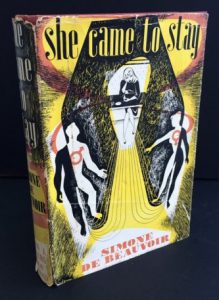
Hello everyone!
Next week I will be presenting Jean-Paul Sartre’s Nausea (1938), one his earliest and most loved works of literature. Now that we’ve become well acquainted with the French existentialist tradition, it will be exciting to finally take a closer look at some of the influential ideas that are distinctly Sartrean. This particular novel was important for introducing the philosophical attitude that Sartre will later come to substantiate in his major text Being and Nothingness.
Due to the richness of the ideas put forth in the novel, I would like our discussion to focus on the tenets of his personal ideology, paying close attention to his solution to the central problem of existentialism, namely, how we ought to confront reality given its “contingency”.
I am posting one excerpt from Nausea that I believe covers a decent breadth of these ideas, and should also give you a good sense of what the experience of reading the novel is like. I am also posting an excerpt from Being and Nothingness which primarily goes over the notion of individual responsibility and “Bad Faith” which has come up a lot so far in our discussions. Finally, there is a link to the very short last chapter of Albert Camus’ “The Myth of Sisyphus”. A friend and intellectual rival of Sartre, Camus presents an alternative approach to the existentialist dilemma thought by many to be more compelling than Sartre’s.
Nausea Excerpt.compressed
Being&NothingnessExcerpt.compressed
http://dbanach.com/sisyphus.htm
For those interested, I am also linking a short book by Sartre titled “What Is Literature?” which is worth browsing through and might be especially helpful for final papers:
https://archive.org/details/whatisliterature030271mbp
Also, here is the powerpoint I used during my presentation:

